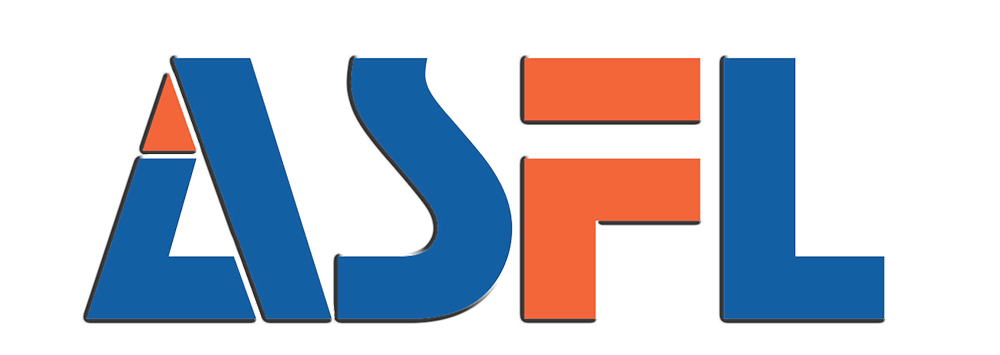Types de machines de remplissage liquide selon le principe de remplissage
Comment les machines de remplissage liquide volumétriques mesurent et distribuent-elles en fonction du volume ?
Les machines de remplissage volumétrique fonctionnent en délivrant des liquides en fonction de paramètres de volume prédéfinis, au lieu de devoir vérifier les poids. La plupart de ces systèmes contrôlent soit le débit à l'aide de mécanismes temporisés, soit utilisent des chambres pour mesurer le produit. Elles gèrent assez bien les liquides de viscosité moyenne, pensez par exemple au sirop ou à l'huile moteur. Ce qui distingue les remplisseurs volumétriques par rapport à d'autres méthodes, c'est leur capacité à rester précis même lorsque les récipients présentent toutes sortes de formes. C'est pourquoi de nombreuses lignes de production optent pour cette approche lorsqu'elles ont besoin d'aller vite, plutôt que de s'inquiéter de la ressemblance exacte entre chaque dose et la précédente.
Remplisseurs à piston : Précision pour liquides hautement visqueux
Les doseurs à piston peuvent atteindre une précision d'environ 0,5 % grâce à leur mécanisme de déplacement mécanique, ce qui rend ces machines particulièrement efficaces pour manipuler des substances épaisses comme les crèmes, les pâtes et même le beurre de cacahuète. Lorsque le piston se rétracte, il aspire le produit dans la chambre avant de le pousser vers les récipients. L'avantage principal de cette méthode est sa capacité à réduire l'air emprisonné dans les matériaux collants. De plus, elle convient bien aux produits contenant des particules qui ont tendance à obstruer les systèmes de pompage classiques. De nombreux fabricants la jugent particulièrement utile pour traiter des produits comportant des morceaux ou des éléments solides.
Doseurs par débordement pour une hauteur de remplissage uniforme quelles que soient les tailles des récipients
Les doseurs à débordement fonctionnent en laissant l'excédent de liquide revenir dans le réservoir, ce qui maintient un niveau constant du ménisque dans tous les récipients. Pour des produits comme l'eau en bouteille ou ces flacons de sérum que l'on retrouve sur les étagères des magasins, avoir la même ligne de remplissage rend l'ensemble plus attrayant lorsqu'ils sont exposés ensemble. Ces machines tolèrent également de légères différences de hauteur des bouteilles, environ plus ou moins 3 millimètres. Cela signifie que les lignes de production n'ont pas besoin de s'arrêter à chaque fois qu'il y a une légère variation entre différents lots de récipients.
Doseurs sous vide pour une manipulation délicate des liquides sensibles
Les doseurs sous vide utilisent une pression négative pour aspirer des liquides délicats — tels que les huiles essentielles ou les vaccins — dans les récipients, sans provoquer d'oxydation ni de mousse. En contrôlant précisément l'intensité de l'aspiration et la vitesse de remplissage, ces systèmes préservent plus efficacement les composés volatils par rapport aux alternatives à gravité, ce qui les rend essentiels dans la production pharmaceutique et celle de boissons haut de gamme.
Systèmes de remplissage par poids net et par pompe pour des lignes de production dynamiques
Les systèmes de remplissage pondéral net utilisent des cellules de charge et un retour d'information en temps réel pour atteindre une précision massique de ± 0,1 %, idéale pour les produits vendus au poids comme les adhésifs industriels. Associés à des pompes à vis excentrée, ils s'adaptent aux fluctuations de viscosité en cours de fonctionnement, permettant des changements fluides entre plusieurs références sur une même ligne de production.
Niveaux d'automatisation dans les machines de remplissage liquide
Machines de remplissage liquide manuelles pour opérations à petite échelle et startups
Les machines de remplissage manuelles constituent une solution économique d'entrée de gamme pour les startups et les producteurs de petites séries. L'opérateur place manuellement les récipients et déclenche le remplissage, ce qui rend ces appareils adaptés aux produits de niche ou à des séries inférieures à 500 unités par mois. Bien qu'elles soient limitées à 10 à 20 récipients par minute, elles offrent un contrôle manuel qui réduit les déversements lors de la manipulation de liquides sensibles.
Machines de remplissage semi-automatiques : un équilibre entre coût et efficacité
Les machines de remplissage semi-automatiques peuvent traiter entre environ 50 et 200 récipients par minute. Ces machines assurent la mesure précise de la quantité à remplir, mais nécessitent tout de même une personne pour charger les récipients manuellement. Pour les entreprises produisant entre 1 000 et 5 000 produits chaque jour, cette configuration fonctionne très bien. Les machines mesurent généralement le volume avec une précision de ±1 pour cent grâce à leurs capteurs et systèmes de contrôle. Un rapport récent d'Industrial Packaging en 2024 révèle également que ces systèmes semi-automatiques permettent de réduire les coûts de main-d'œuvre d'environ 40 pour cent par rapport aux opérations entièrement manuelles. De plus, ils restent suffisamment flexibles pour passer facilement d'un produit à un autre sans trop de difficultés.
Systèmes de remplissage liquide entièrement automatiques pour la production industrielle à grande vitesse
Les systèmes modernes d'emballage entièrement automatiques fonctionnent parfaitement avec des convoyeurs rotatifs et des postes de bouchonnage, atteignant souvent des vitesses supérieures à 400 récipients par minute. Ces configurations sont désormais assez courantes dans les grandes installations de boissons où la production dépasse facilement 20 000 bouteilles par heure. Les machines utilisent des pompes avancées à servomoteurs ainsi que des contrôles de viscosité en temps réel qui maintiennent des niveaux de remplissage remarquablement constants, d'environ 99,5 %. Selon des rapports récents de l'industrie, ces lignes automatisées permettent de réduire les déchets de produits d'environ 30 %, tout en diminuant la consommation d'énergie d'environ 18 % par rapport aux anciennes alternatives semi-automatisées. Cela les rend idéales pour répondre aux exigences de hauts volumes de production typiques des opérations modernes de fabrication maigre.
Configurations opérationnelles : Machines à remplir en ligne versus rotatives
Machines à remplir en ligne pour une production linéaire et une intégration facile
Les doseurs en ligne fonctionnent sur un système de convoyeur droit, ce qui en fait un excellent choix lorsque l'espace disponible sur l'usine est restreint. Ces machines peuvent traiter entre 10 et 120 récipients par minute, ce qui les rend très polyvalentes pour de petites séries de production ou lorsqu'on change régulièrement de type de récipient. La conception de ces systèmes permet de les intégrer facilement dans la plupart des installations d'emballage existantes, sans trop de difficultés. De plus, comme les composants mécaniques ne sont pas particulièrement complexes, les temps d'arrêt pour maintenance sont réduits et les nouveaux opérateurs apprennent à les utiliser plus rapidement par rapport à d'autres options d'équipement disponibles sur le marché.
Doseurs liquides rotatifs pour une grande capacité de production et un encombrement réduit
Le remplisseur rotatif fonctionne à l'aide d'un mécanisme d'indexation circulaire qui peut traiter entre 100 et plus de 500 récipients par minute. Cette configuration maximise vraiment la productivité tout en occupant beaucoup moins d'espace au sol par rapport aux systèmes linéaires traditionnels, nécessitant environ 30 pour cent d'espace en moins. Ces machines conviennent particulièrement bien aux récipients ayant une forme régulière, comme les bouteilles rondes standard ou les canettes. La conception en circuit fermé permet également de réduire les pertes de produit, certains fabricants indiquant une économie d'environ 2 à 5 pour cent par rapport aux anciennes méthodes de remplissage linéaires, selon des données récentes du secteur datant de la fin 2023.
Systèmes monoblocs combinant remplissage, bouchonnage et étiquetage sur une même ligne
Les systèmes monoblocs regroupent le remplissage, le bouchonnage et l'étiquetage sur une seule ligne de production automatisée. Cette configuration réduit la main-d'œuvre manuelle d'environ 90 %, ce qui représente une grande différence pour les travailleurs. Le temps de transition entre les différentes étapes diminue également de 45 à 60 secondes par lot. Les usines ayant adopté ce type d'installation constatent souvent une augmentation globale de leur vitesse de production de 18 à 22 %. Cette amélioration est particulièrement marquée dans des secteurs tels que l'industrie agroalimentaire et la fabrication pharmaceutique, où le timing est crucial. Un autre avantage important réside dans la conception compacte du système. Comme toutes les opérations se déroulent au même endroit au lieu de plusieurs postes distincts, le risque de contamination est nettement réduit. Cela s'avère essentiel lorsqu'on travaille avec des produits devant répondre à des normes d'hygiène strictes ou s'inscrivant dans des conditions de fabrication réglementées.
Applications spécifiques par secteur des machines de remplissage de liquides
Agroalimentaire : Remplisseurs à gravité et à pompe pour jus, eau et boissons gazeuses
Les doseurs par gravité sont largement utilisés pour les liquides peu visqueux comme le jus de fruit et l'eau en bouteille, avec une précision d'environ plus ou moins 1,5 % grâce à la pression atmosphérique classique, selon Packaging Digest de l'année dernière. Toutefois, lorsqu'il s'agit de boissons gazeuses, les fabricants font appel à des doseurs à pompe pressurisés, qui maîtrisent efficacement l'écume et permettent de produire plus de 300 bouteilles par minute. À l'échelle plus large, les entreprises agroalimentaires et de boissons ont représenté environ 42 % de tous les appareils de remplissage liquide vendus dans le monde en 2023. Pourquoi un tel intérêt ? Tout simplement parce qu'on ne peut ignorer les normes d'hygiène strictes, et que tout le monde souhaite des produits qui restent frais plus longtemps sur les étagères des magasins.
Pharmacie et Soins personnels : Précision, Stérilité et Conformité aux BPF
Les doseurs à piston capables de gérer des tolérances inférieures à 500 microns sont essentiels pour garantir des dosages précis dans les injections et les gouttes pour les yeux. Par ailleurs, les systèmes péristaltiques permettent de garder les différents produits séparés sur les lignes de production de soins cosmétiques. Selon des rapports sectoriels, environ les trois quarts des entreprises pharmaceutiques recherchent désormais des équipements de remplissage intégrant des systèmes CIP, car ils doivent respecter les normes strictes de la norme GMP Annex 1. Pour les produits plus épais comme les sérums capillaires, les doseurs à double vis sont les plus adaptés, car ils assurent une homogénéité des lots d'environ 99,8 %, ce qui est crucial lorsque le contrôle qualité est primordial.
Industrie chimique : Résistance à la corrosion, sécurité et confinement des liquides dangereux
La plupart des fabricants chimiques optent pour des équipements de remplissage construits en Hastelloy C-276 lorsqu'ils manipulent des acides et solvants agressifs, car celui-ci résiste à la corrosion environ dix fois mieux que l'acier inoxydable 316L standard, selon les résultats de NACE International en 2023. De nos jours, les remplisseurs rotatifs antidéflagrants équipés de systèmes de purge à l'azote sont devenus une pratique courante pour manipuler des matières inflammables, réduisant ainsi considérablement les incidents liés à l'ignition des vapeurs dangereuses que tout le monde cherche à éviter. En ce qui concerne plus particulièrement les opérations en vrac, les systèmes modernes de mesure par poids net atteignent généralement une précision d'environ plus ou moins 0,25 pour cent. Une telle précision permet aux entreprises de respecter les limites réglementaires imposées à la fois par les réglementations de l'OTD et par les exigences de l'OSHA concernant la communication appropriée des matières dangereuses dans leurs installations.
Choisir la bonne machine de remplissage liquide pour vos besoins de production
Adapter le type de machine aux caractéristiques et à la viscosité du produit
Selon Packaging Digest de l'année dernière, environ 84 pour cent des choix de remplissage dans les industries agroalimentaires et pharmaceutiques dépendent fortement de la viscosité des liquides. Pour les liquides peu visqueux comme l'eau ou les spiritueux, les systèmes à remplissage par gravité sont généralement l'option privilégiée, car ils permettent un dosage rapide. Toutefois, lorsqu'il s'agit de substances plus épaisses telles que les crèmes et les pâtes, les fabricants optent généralement pour des doseurs à piston, car ceux-ci manipulent mieux les matériaux sensibles au cisaillement, sans les dégrader. Les shampoings et produits similaires contenant beaucoup de bulles d'air nécessitent un équipement pressurisé spécifique, afin d'éviter la formation d'écume pendant les opérations de remplissage. La mesure de la viscosité d'un produit devrait également être effectuée dans des conditions réelles de production. De légers changements de température ont ici une grande importance. Nous avons constaté des cas où une simple variation de 10 degrés Celsius pouvait modifier la vitesse d'écoulement d'un fluide de 15 à 20 pour cent, notamment pour certains fluides qui s'amincissent sous contrainte.
Évaluation des exigences de production et intégration avec les lignes existantes
| Échelle de production | Type de machine | Contenants/Heure |
|---|---|---|
| Débutant/Petit lot | Semi-automatique | 300–600 |
| Moyenne échelle | Machine à remplir rotative + convoyeur | 1,200–3,000 |
| À grande vitesse | Monobloc avec 16+ buses | 6,000–12,000 |
Éviter la surcapacité — faire fonctionner une machine à 40 % de sa capacité gaspille environ 18 dollars par heure en énergie et en maintenance (Food Manufacturing 2022). Pour les lignes de production mixtes, choisir des machines conformes aux normes ISO et dotées de protocoles Modbus/TCP afin d'assurer la compatibilité avec les API existants.
Garantir la conformité réglementaire et préparer votre investissement pour l'avenir
Pour les opérations de remplissage destinées à l'industrie alimentaire et pharmaceutique, l'équipement doit respecter les réglementations de la FDA selon le 21 CFR Partie 11 ainsi que les directives de l'EHEDG concernant les capacités de traçabilité et la facilité de nettoyage. Lorsque l'on travaille dans des environnements chimiques agressifs, l'utilisation d'acier inoxydable 316L au lieu d'aluminium fait toute la différence. Selon des recherches publiées l'année dernière dans le PDA Journal, ce matériau réduit la contamination par les particules de près de 92 %. À l'avenir, il est judicieux d'investir dans des systèmes conçus avec modularité. De nombreuses entreprises ont besoin d'ajouter ultérieurement des mises à niveau telles que des systèmes de vision pour les contrôles qualité ou des étiquettes spéciales anti-contrefaçon. Les statistiques montrent que près des deux tiers des fabricants finissent par moderniser leurs lignes de remplissage moins de cinq ans après l'achat initial. Ainsi, prévoir une évolutivité dès le départ permet d'éviter bien des complications par la suite.
FAQ
Quels facteurs dois-je prendre en compte lors du choix d'une machine de remplissage liquide ?
Les facteurs clés incluent le type de liquide (viscosité), les dimensions du contenant, la vitesse de production, le niveau d'automatisation et les besoins en conformité réglementaire.
Pourquoi les doseurs à piston sont-ils idéaux pour les produits à haute viscosité ?
Parce qu'ils utilisent un déplacement mécanique, ce qui empêche l'air d'être piégé et gère efficacement les produits épais comme les pâtes ou les crèmes.
Quelles sont les différences entre les machines de remplissage linéaires et les machines de remplissage rotatives ?
Les machines linéaires fonctionnent sur des systèmes convoyeurs linéaires, idéaux pour des petites séries de production, tandis que les machines rotatives utilisent des mécanismes d'indexation circulaire pour maximiser la productivité à grande vitesse dans un espace réduit.
Les systèmes entièrement automatiques réduisent-ils les coûts de production ?
Oui, les systèmes entièrement automatiques réduisent souvent les coûts en minimisant les frais de main-d'œuvre, en diminuant les déchets et en optimisant l'efficacité énergétique.
Comment les exigences spécifiques à l'industrie influencent-elles le choix de la machine ?
Par exemple, les industries pharmaceutiques nécessitent des systèmes dotés de capacités de CIP pour respecter les normes BPF, tandis que les industries chimiques privilégient les matériaux résistants à la corrosion.
Table des Matières
-
Types de machines de remplissage liquide selon le principe de remplissage
- Comment les machines de remplissage liquide volumétriques mesurent et distribuent-elles en fonction du volume ?
- Remplisseurs à piston : Précision pour liquides hautement visqueux
- Doseurs par débordement pour une hauteur de remplissage uniforme quelles que soient les tailles des récipients
- Doseurs sous vide pour une manipulation délicate des liquides sensibles
- Systèmes de remplissage par poids net et par pompe pour des lignes de production dynamiques
- Niveaux d'automatisation dans les machines de remplissage liquide
- Machines de remplissage liquide manuelles pour opérations à petite échelle et startups
- Machines de remplissage semi-automatiques : un équilibre entre coût et efficacité
- Systèmes de remplissage liquide entièrement automatiques pour la production industrielle à grande vitesse
- Configurations opérationnelles : Machines à remplir en ligne versus rotatives
- Applications spécifiques par secteur des machines de remplissage de liquides
- Choisir la bonne machine de remplissage liquide pour vos besoins de production
- FAQ





